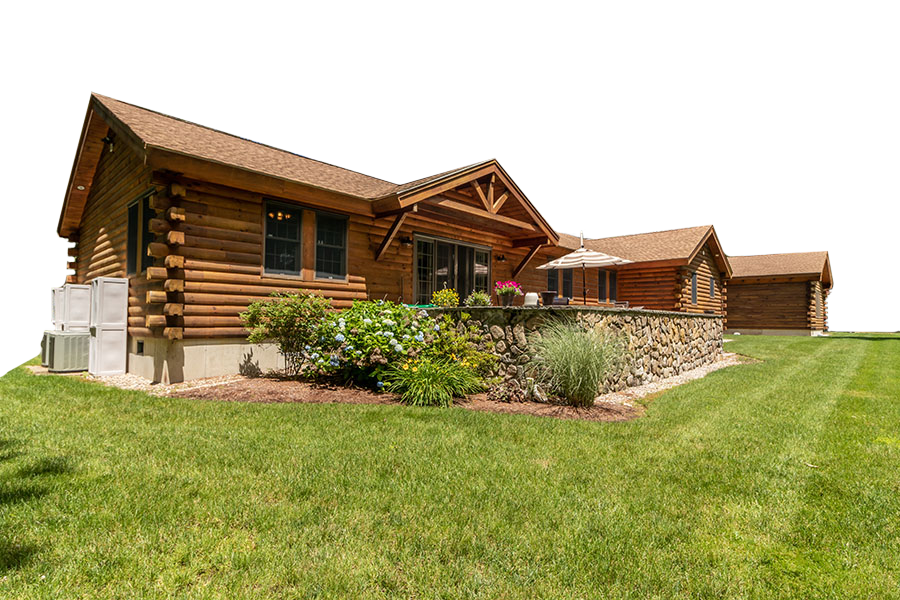FINANCING
UNDERSTANDING LOG HOME FINANCING
Log home financing is not a "one size fits all" proposition. Financing the purchase or construction of a log home requires a bit more flexibility on the part of the lender. While there are many banks that will work with you on your project, the process requires a good relationship with the loan officer and good communication throughout. Find the right bank, one that will work with non-conventional loans and the project can run very smoothly. Here are a few things to consider when it comes to financing a log home.
Log Home Construction Loans
A construction loan describes the type of loan given by a bank to finance a home building project. Before receiving a log home construction loan, the buyer and builder must first cost out the entire project and present those estimates to the bank for their approval. Funds released from a construction loan are not given out all at once. Instead, the bank releases money from the loan in smaller disbursements as work on the project is completed.
A construction loan works for the buyer because he pays interest on only the money that has been drawn from the loan, and not on the entire amount to be borrowed. The builder likes it because he gets paid regularly as his work is done. And the bank is satisfied knowing that the money it has paid out is not greater than the value of what has been completed so far.
Log Home Market Appraisal
Before a bank will finance the purchase or construction of a log home, it must first determine the home's market value. The bank will hire a professional appraiser to evaluate the home and determine its worth based on the real estate market in your area. To do this, the bank will consider the size of the home as well as the unique features. For example, a 2500 square foot home with cathedral ceilings, hardwood floors and a custom kitchen will bring a different value than a smaller home with more standard features.
Log Home Comps
Next the bank appraiser will review recent home sales in the area to find the home's potential resale value. To do this, he will be looking for homes with similar features knowing that the market value of the purchased home should be comparable to the value of those homes which have recently sold. This will give them the most accurate and up-to-date snapshot of the home's current worth.
Comps can be somewhat harder for log homes. True, it may not be difficult to find conventional homes with comparable features. However, finding them in a log home can be much harder; especially a log home nearby that may have sold within the past few months, which the bank prefers.
What often happens is that people that build log homes tend to live in them for a longer period of time. For many log home owners, this may not be their first home, but it may be their last. Because the log home is so unique, it is not a transitional home, but more likely a final home. For this reason, there are fewer log home re-sales for the appraiser to use for comparison.
Not having a recent log home resale makes the appraisal process more difficult. But it is not a deal breaker. Generally the appraiser will do their best to compare with whatever home re-sales are available to them. However, another log home is preferred.
Curbside Payment
For new home construction, you should let the bank know that you will need a "curbside payment" upon delivery. What this means is that when the package is brought to the building site, the log home producer would like to be paid for the full value of the materials. This is a when using a lender with log home construction experience can be a helpful.
The issue is this. At any point in the construction process, the bank wants the amount of money they pay into the project to be less than the value of the project if something were to happen to stop construction. Plus, they want to be sure that the log home package gets built in a reasonable amount of time. For this reason, it much safer for the bank to pay for the log material after the kit is constructed.
There are a few ways to get past this. If the borrower can raise the funds on his own, he can pay for the delivered package and have the bank reimburse them after the kit is assembled.
A more common solution is to use preexisting equity in the property. When the borrower has little or no mortgage on the building site, the equity in the land may be enough to cover the cost of the log home package. The bank can pay for the log home package at delivery as a way of reimbursing the customer for the value of his land.
Finally, if the bank has a good relationship with the log home builder, it may have the confidence to make the log home payment upon delivery, knowing that the builder's history of reliability. This is a good reason to use a log home builder with local experience and a good reputation.
Start Your Research Early
Here are a few other points to consider. Be sure to meet with the banker as early as possible in the process. Get prequalified and educate yourself as to how the entire process works. Assemble a checklist of exactly what the bank needs to move forward with the application and closing process.
If you are building a new home, make sure you borrow enough money, plus a little extra. There are always unexpected costs. And it is better to have money to spare than to have to apply for more. Construction money left over can be used to pay down the total loan amount before the final closing.
Log homes are right now as popular as ever. And many banks recognize that log home financing can be a good niche for their business. Our experience is that log home customers are generally high equity, low debt buyers, especially if they own a building site. For the bank, this is the ideal customer!
Contact Us
Have questions about our services or log home maintenance?
Call us at (800) 634-4838 or contact us online.


